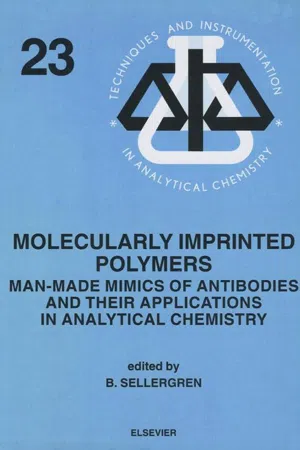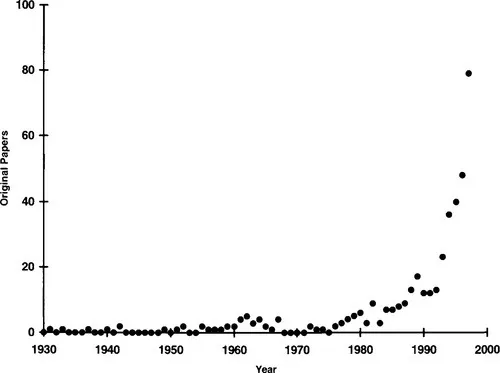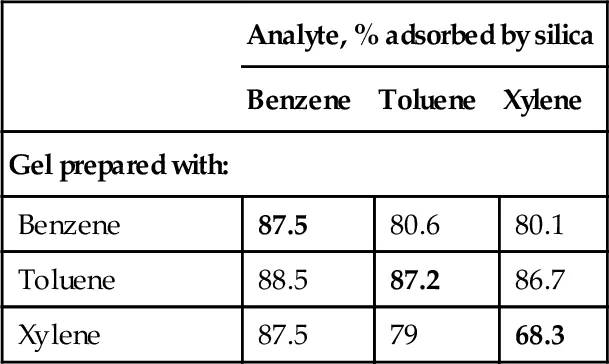
Molecularly Imprinted Polymers
Man-Made Mimics of Antibodies and their Application in Analytical Chemistry
- 582 pages
- English
- ePUB (mobile friendly)
- Available on iOS & Android
Molecularly Imprinted Polymers
Man-Made Mimics of Antibodies and their Application in Analytical Chemistry
About this book
This book is divided into 5 sections starting with an historic perspective and fundamental aspects on the synthesis and recognition by imprinted polymers. The second section contains 8 up-to-date overview chapters on current approaches to molecular and ion imprinting. This is followed by two chapters on new material morphologies and in the last two sections various analytical applications of imprinted polymers are given, with the last four chapters devoted to the promising field of imprinted polymers in chemical sensors.The authors of this volume have widely different backgrounds; mainly polymer chemistry, organic chemistry, biochemistry and analytical chemistry, which means that this book has an interdisciplinary character and should appeal to a broad audience.
Frequently asked questions
- Essential is ideal for learners and professionals who enjoy exploring a wide range of subjects. Access the Essential Library with 800,000+ trusted titles and best-sellers across business, personal growth, and the humanities. Includes unlimited reading time and Standard Read Aloud voice.
- Complete: Perfect for advanced learners and researchers needing full, unrestricted access. Unlock 1.4M+ books across hundreds of subjects, including academic and specialized titles. The Complete Plan also includes advanced features like Premium Read Aloud and Research Assistant.
Please note we cannot support devices running on iOS 13 and Android 7 or earlier. Learn more about using the app.
Information
A historical perspective of the development of molecular imprinting
1.1 INTRODUCTION

1.2 POLYAKOV INVENTS MOLECULAR IMPRINTING
| Analyte, % adsorbed by silica | |||
| Benzene | Toluene | Xylene | |
| Gel prepared with: | |||
| Benzene | 87.5 | 80.6 | 80.1 |
| Toluene | 88.5 | 87.2 | 86.7 |
| Xylene | 87.5 | 79 | 68.3 |
1.3 THE CONTRIBUTIONS OF PAULING AND DICKEY
1.3.1 Theories of antibody formation
Table of contents
- Cover image
- Title page
- Table of Contents
- Copyright page
- Preface
- List of contributors
- List of abbreviations
- Chapter 1: A historical perspective of the development of molecular imprinting
- Chapter 2: Fundamental aspects on the synthesis and characterisation of imprinted network polymers
- Chapter 3: Thermodynamic principles underlying molecularly imprinted polymer formulation and ligand recognition
- Chapter 4: Molecular imprinting with covalent or stoichiometric non-covalent interactions
- Chapter 5: The non-covalent approach to molecular imprinting
- Chapter 6: Metal-ion coordination in designing molecularly imprinted polymeric receptors
- Chapter 7: Covalent imprinting using sacrificial spacers
- Chapter 8: Molecular imprinting approaches using inorganic matrices
- Chapter 9: Imprinting polymerisation for recognition and separation of metal ions
- Chapter 10: Bio-imprinting: polymeric receptors with and for biological macromolecules
- Chapter 11: Surface imprinting of microorganisms
- Chapter 12: Polymerisation techniques for the formation of imprinted beads
- Chapter 13: Techniques for the in situ preparation of imprinted polymers
- Chapter 14: Application of molecularly imprinted polymers in competitive ligand binding assays for analysis of biological samples
- Chapter 15: Molecularly imprinted polymers in solid phase extractions
- Chapter 16: Capillary electrochromatography based on molecular imprinting
- Chapter 17: Molecularly imprinted polymers in enantiomer separations
- Chapter 18: Biomimetic electrochemical sensors based on molecular imprinting
- Chapter 19: Ionic sensors based on molecularly imprinted polymers
- Chapter 20: Toward optical sensors for biologically active molecules
- Chapter 21: Non-covalent molecularly imprinted sensors for vapours, polyaromatic hydrocarbons and complex mixtures
- Index
